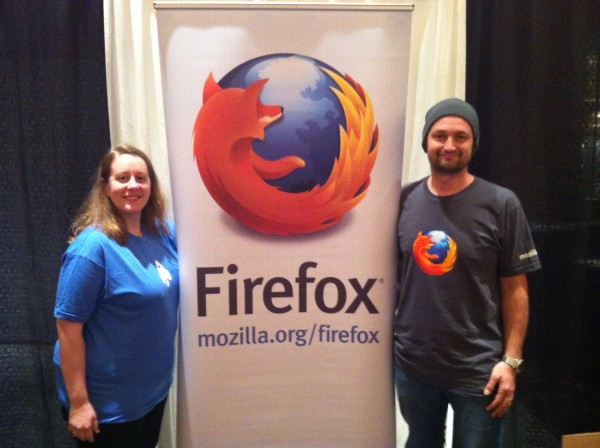This morning I watched Tomas Ulin’s Keynote at Percona Live: MySQL Conference and Expo, delivered yesterday. I missed this live as I am not at Percona Live (I am on a conference hiatus from March through September for personal reasons). … Continue reading
This morning I watched Tomas Ulins Keynote at Percona Live: MySQL Conference and Expo, delivered yesterday. I missed this live as I am not at Percona Live (I am on a conference hiatus from March through September for personal reasons). As far as the technical content in it, there have been a few posts about the Hadoop Applier and MySQL 5.7, so theres not much of a need to delve in there.
Message #1: Failure
I was impressed that Ulin spoke of failure. Around 7:27 in the video above, Ulin says, We really failed with 5.0, and even 5.1 we werent fully and back on track when we released. He spoke about the new way MySQL 5.5 and 5.6 were engineered, a hybrid agile/milestone development cycle. There are some hidden messages here:
Hidden Message #1: Oracle is a great steward for MySQL
MySQL 5.0 was GA on October 2005 and MySQL 5.1 was GA on Nov 2008. This was before Oracle was ever in the picture. Ulin said MySQL 5.0 and 5.1 failed, mentioning that the ship cycle was rushed and features were released when they were not ready, causing technical debt. MySQL 5.5 and 5.6 are different, and the hidden message is that Oracle had a part in making this better. And honestly, I believe that. Say what you will about Oracle, but this cannot be argued: they do know how to develop and ship a product.
When Sun bought MySQL, I was pretty hopeful. I knew a bunch of folks within MySQL that were unhappy, and from what I gathered, MySQL did not really need a parent company, they needed a *parent*. It looks like Oracle has been great for getting MySQL releases in shape MySQL 5.5 had a LOT of great features from the community, when previously it could take years before a community patch was accepted, and MySQL 5.6 has a lot of innovative features from strong developers.
Hidden Message #2: Oracle is more reliable for MySQL releases
With 5.5 and 5.6, the 2-year development cycle has been almost exact MySQL 5.5 was GA in Dec 2010, 25 months after 5.1, and MySQL 5.6 was GA in Feb 2013, 26 months after 5.5. I remember the agonizing wait for MySQL 5.0, and it looks like under Oracle we will not have a debacle like that again. Ulin specifically mentioned a 24-month cycle.
Speaking about cycles, have you noticed that Oracle has not stopped providing the MySQL binaries and code, even for the EOLd products? I have a blog post I want to write about the lifecycle policy and how it has evolved, so stay tuned for that.
Message #2: Oracles Investment in MySQL
Ulin mentioned Oracles investment in MySQL a lot. Why? Well, in 2009 Oracle made a written 5-year commitment to MySQL. It is now 2013, and some folks have been wanting Oracle to make another promise. Frankly, I think it is ridiculous to ask a company to make a commitment in writing so far ahead, and nobody demands that of any other company. Oracle has doubled the number of MySQL engineers and tripled the number of MySQL QA staff, and has the largest team of MySQL developers of any company anywhere. Unfortunately we did not get exactly how many people that isit is only a little bit impressive if you tripled the team from 1 person to 3 people, but more impressive if you tripled the team from 10 people to 30 people.
Lets take a number we did get the QA team now has 400 person-years of experience on it. Lets say the QA team was 10 people before, and now it is tripled to 30 people. That means the average QA person has over 13 years experience in QA, which is about a year longer than my entire post-college IT career. If there are more engineers with less experience, thats pretty impressive for the number of people working on finding and fixing bugs, and if there are fewer engineers, they have even more years of experience.
Hidden Message #3: Oracle has an open-ended commitment to MySQL
Oracle has MySQL trainings, events and tech tours on 6 continents (none in Antarctica, but plenty in at least 3 different cities throughout Africa Nairobi, Johannesburg, Pretoria, at lesat that Im aware of because I mention it on the podcast along with SkySQL, Percona, FromDual and Tungsten events). They have doubled the engineering staff and tripled the QA staff and are still hiring. In the past year they sponsored over 40 events, delivered over 70 talks at conferences, and of course they have a huge investment in MySQL Connect just as Percona Live added a day in 2013, MySQL Connect is adding a day as well. With all that time and money invested in people and events, they are not going to stop working on MySQL any time soon.
(BTW if you missed it, MySQL Connect has a super saver registration before May 3rd, save 45%. Hard to believe its almost half price if you register now!)
Note that the hidden messages above are completely my interpretation, and represent nothing other than my opinion.











